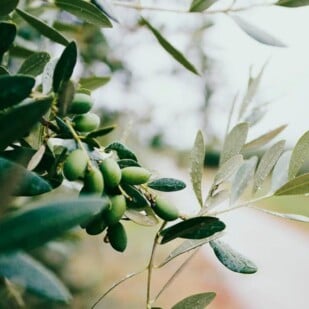We hear from folks all the time that they are finding their low FODMAP cooking to be boring. This article is all about How To Add Flavor To Low FODMAP Cooking, while following the low FODMAP diet! First of all, we just have to say, that we have loads of information for you. There is absolutely no reason why your low FODMAP cooking cannot be flavor-packed – and we are going to show how to do it, while keeping your irritable bowel syndrome (IBS) symptoms in check.
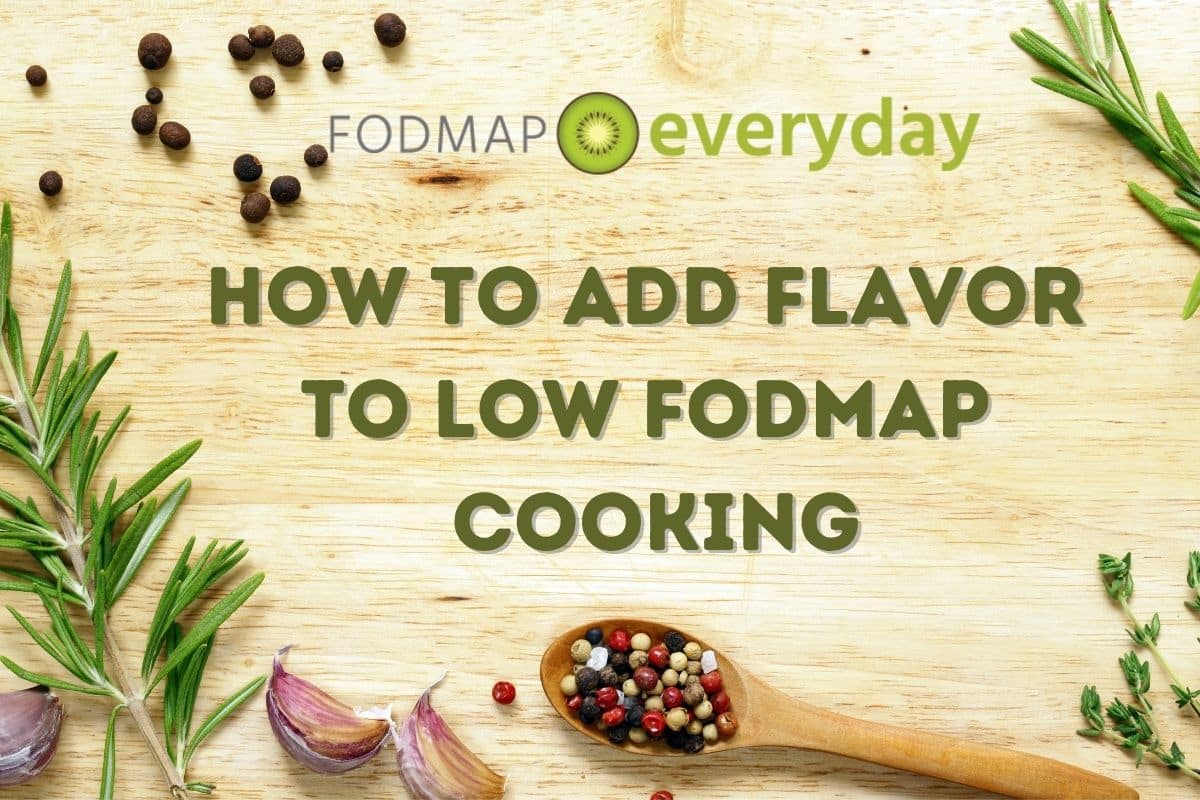
Important Note: We will be discussing many flavorful items that have been lab tested by both Monash University and FODMAP Friendly. Please make sure you have downloaded both of these smartphone apps so that you can refer to them as needed for the most up-to-date information (new items are added all the time), and for specific serving sizes.
The Low FODMAP Diet Is Not FODMAP Free
The low FODMAP diet is “low” FODMAP, not “no” FODMAP. This means that many times a lab tested and certified low FODMAP prepared food might contain a small amount of onion and/or garlic, or even high fructose corn syrup. We understand that this can appear to be contradictory, especially when the first thing a doctor might tell you is to avoid all high FODMAP foods (more on this below).
Our best suggestion, especially when veering into condiments territory – and there are a slew of condiments that add flavor to our cooking, and many of them contain some onion and/or garlic – is to understand that the low FODMAP diet is very much built upon serving sizes, as well as understanding stacking and timing of symptoms.
The low FODMAP diet is very much built upon serving sizes, as well as understanding stacking and timing of symptoms.
In brief, eating a small amount of a high FODMAP food (like garlic) might not trigger IBS symptoms, whereas eating the same food in a larger quantity might. Eating that small serving that you digested well, might also wreak havoc if you repeat the serving size less than 2 to 3 hours later. That is “stacking”.
Please read these articles to brush up on the info you need:
Let’s Address Garlic & Onion
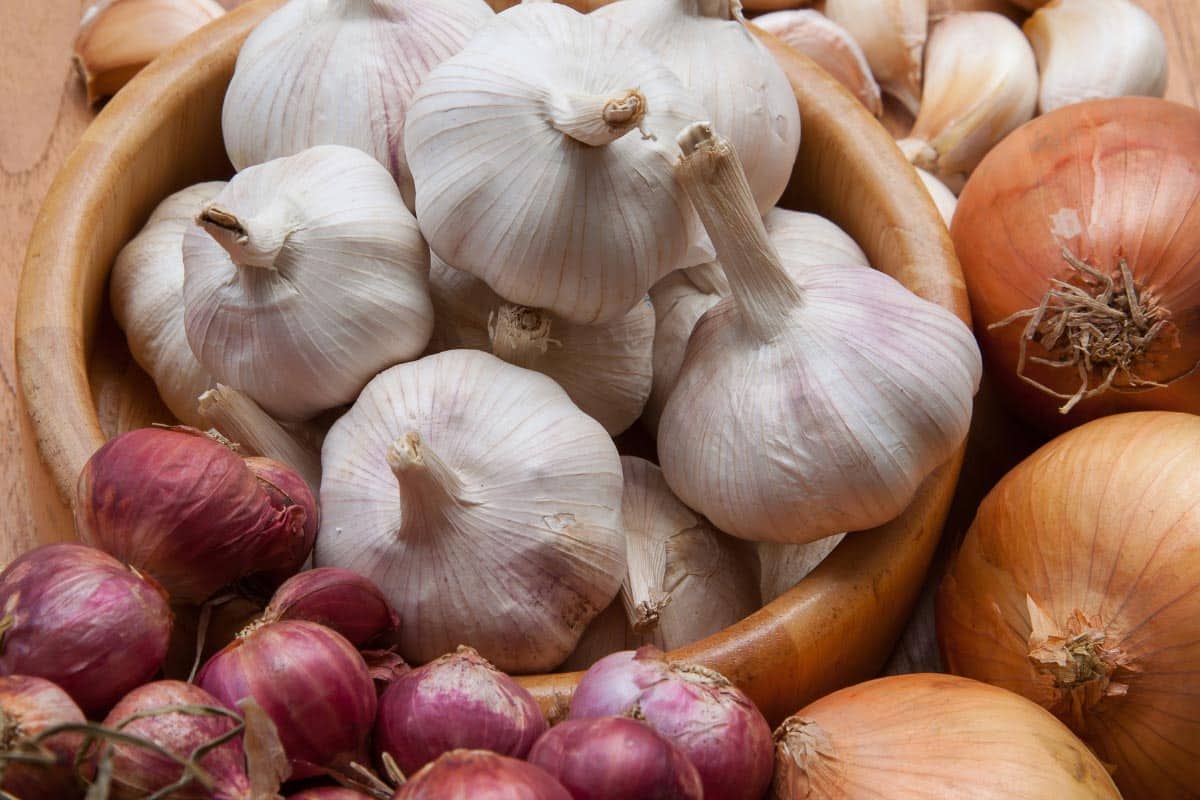
We have to address garlic and onions (alliums) first because they are both very high in fructans (part of the “O” in FODMAP) and one of the first things folks often hear from their doctor is to avoid both garlic and onion. This is for two main reasons:
- Fructans are the FODMAP that trigger the most symptoms in most people.
- Garlic and onion are in a lot of foods, both home-cooked and prepared. If we remove them from our diet, we are effectively removing a good bit of FODMAP exposure.
Many recipes begin with sautéing garlic and or onion, in recipes as varied as soups to stews, sauces, appetizers, pasta dishes and main dish recipes of all sorts. They also add a lot of flavor, so when we are told to eliminate these beloved ingredients, panic sets in and we think, “how am I going to cook flavorful food”?
We have an entire article for you: Low FODMAP Garlic & Onion Substitutes, which takes you through all your options quite thoroughly.
We have an entire article for you: Low FODMAP Garlic & Onion Substitutes, which takes you through all your options quite thoroughly.
Here are some highlights (use your Monash University smartphone app and FODMAP Friendly smartphone app to determine serving sizes).
- Fructans are water soluble, but NOT oil soluble. This is why you can make garlic and/or onion infused oil and the result will be low FODMAP. As long as all of the garlic/onion solids are removed from the 100% oil, and the only ingredients you brought together were the garlic and/or onion and the oil, then the resulting flavored oil will be low FODMAP. We have what we think are the best recipes found anywhere: Low FODMAP Garlic-Infused Oil and Low FODMAP Onion-Infused Oil.
- Commercially produced garlic and onion flavored oils are also available. There are even roasted-onion and shallot flavored.
- We strongly suggest you have olive oil based as well as vegetable based infused oils on hand. They do have different applications in cooking. For instance, for our Chinese-inspired stir-fries we always use vegetable oil based.
- You can also make these infused oils on the fly: Add some oil to your pot, add garlic pieces, and/or onion pieces, sauté, then remove all the solids and proceed with your recipe.
- The green parts of scallions are low FODMAP.
- The green parts of leeks are low FODMAP, and there are small amounts of leek bulb that are low FODMAP, too.
- Chives and garlic chives have generous low FODMAP serving sizes.
- There are many garlic and onion flavored dried seasonings available. Again, please refer to our main article, Low FODMAP Garlic & Onion Substitutes. We particularly love the FreeFod Garlic Replacer and FreeFod Onion Replacer; they can be used in a very similar way to conventional high FODMAP garlic and onion powders.
- And remember, small amounts of garlic and/or onion do appear in certain low FODMAP foods, and this is not a contradiction, due to recommended serving sizes.
There is no reason why you have to go without garlic and onion flavor in your low FODMAP cooking.
There is no reason why you have to go without garlic and onion flavor in your low FODMAP cooking.
Salt & Pepper
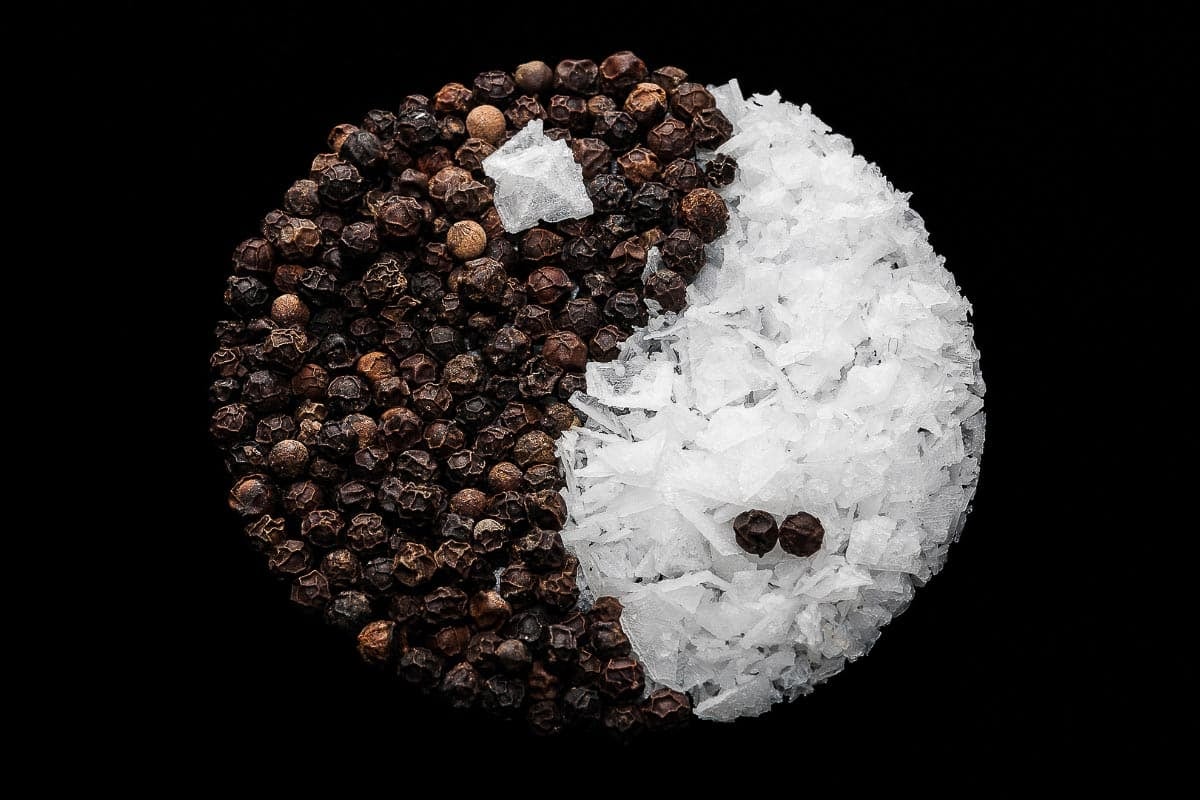
We want to discuss salt and pepper. You might think they are not worth a section unto themselves, but they are! Not all salt is created equal and the same goes for pepper.
Salt
First of all, know what your recipe calls for. At FODMAP Everyday® if a recipe calls for “salt”, we are suggesting that you use conventional table salt. This is what is listed in our baking recipes, for instance.
In most of our savory, cooking recipes we call for kosher salt and I prefer Diamond Crystal Kosher Salt.
The reason this matters is because 1 teaspoon of table salt and 1 teaspoon of Diamond Crystal Kosher Salt are not the same amount of salt, due to the larger kosher crystals – nor do they have the same flavor. Speaking of flavor, I tend to not use fine-grained sea salt as I find the salinity to be very aggressive and not to my personal liking.
And then there is Himalayan pink salt. It is true that Himalayan pink salt has some nutrients that table salt does not, but you would have to eat cups of it on a regular basis to gain any benefit. You do not need to spend the extra money.
We also sometimes call for a finishing salt, such as Maldon. This is a large flake English salt that adds crunch, saltiness and a textural dimension to a recipe. Large crystal kosher salt can be used in a pinch.
Pepper
Most of the pepper that we call for in our recipes in black pepper. There are exceptions and please use what is called for in each recipe. When it comes to black pepper, I cannot overstate enough that freshly ground black pepper bears no resemblance to tinned, pre-ground black pepper.
Freshly ground black pepper has fruitiness and bite. It has aroma and adds complexity to a dish. Pre-ground black pepper, at its best, is a faint equivalent, and at its worst is stale and contains off-flavors.
If you are not in the habit of grinding your pepper fresh as you need it, this one change can add lots of flavor to your low FODMAP cooking.
I like a classic wooden peppermill for the table, but for the kitchen, when I might have a recipe asking for ½ teaspoon of freshly ground black pepper, I want to be able to grind it quickly and easily. Look no further than the Peppermate Peppermill. I love these – and they make great host gifts, too.
In short: please use what is called for in each individual recipe for best results. And when a recipe says, “season to taste”, it means just that. Use your tastebuds and add a level of salt and pepper that is agreeable with you. Mere salt and pepper can add a lot of flavor to your dishes, if they are the right kind. Something like pre-ground black pepper could actually make things worse.
Chiles

We have an entire article for you on chiles (or “chillis”, as Monash University says). It is true that peppers (chiles), especially hot and spicy ones, contain capsaicin, which can be a gut irritant. It is not, however, a FODMAP issue. Know your tolerances! Many of us tolerate certain serving sizes of chiles just fine.
If you are one of us, then chiles can enhance your low FODMAP cooking. Please read through All About Chile, Chili & Chilli & The Low FODMAP Diet for everything you want – and need – to know. And the great news is that Monash is always lab testing new foods: recently we got the details on poblanos and gochugaru.
That article also includes info on hot sauces, many of which are low FODMAP.
Herbs: Fresh & Dried
Herbs and spices are what many of us think of when we think about seasoning our food. Thankfully, many have been lab tested and we do know the low FODMAP servings that are appropriate for the Elimination Phase. On the Monash app, look under “Condiments” for both fresh and dried herbs. On the FODMAP Friendly app, “Herbs & Spices” have their own section.
Fresh Herbs
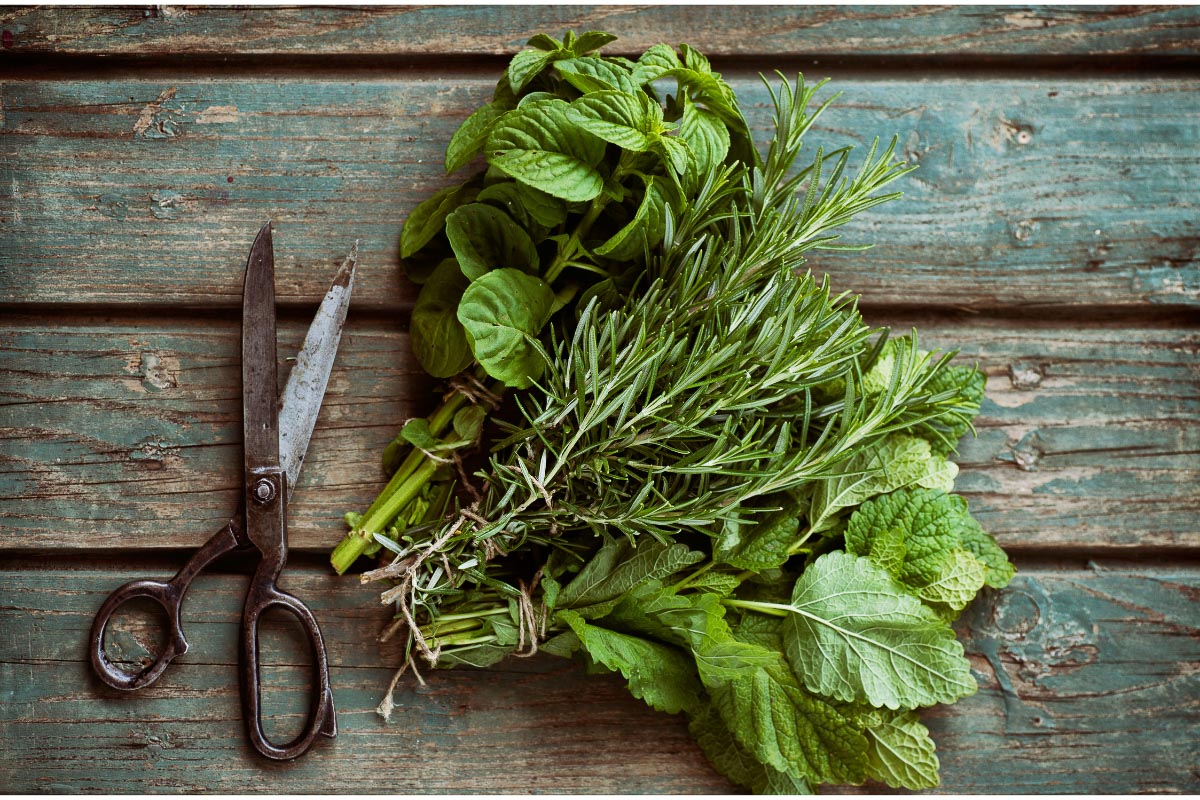
Fresh herbs are a classic way to add flavor to cooking, and thankfully, many have been lab tested for FODMAPs and have very generous servings sizes.
Please note that fresh herbs are very light in weight, so even though an entry for Basil, for instance, lists only 16 g as a low FODMAP serving, that amount measured out in the Monash lab is 1 full cup!
Fresh herbs can effectively be used during cooking and also after.
Please refer to your apps for serving sizes.
In alphabetical order, here are fresh herbs that have been lab tested:
- Basil
- Cilantro/Coriander
- Curry leaves, fresh
- Dill
- Gotukala
- Lemongrass
- Makrut lime leaves (called kaffir on the apps)
- Mint
- Pandan leaves
- Parsley
- Rampa leaves
- Rosemary
- Sage
- Tarragon
- Thai basil
- Thyme
Fresh Herb Storage
Storage will depend on the herb. We divide them into the following categories: tender, hardy and basil. Yes, basil gets its own approach.
Tender Herbs: This category includes herbs such as cilantro, dill, mint, parsley and tarragon. Place your fresh herbs in a bowl of cool water and gently swish around to loosen surface dirt and debris. Use a salad spinner to remove excess moisture, then pat dry with linen or paper towels. Next, snip off the stem ends (just like you do with fresh flowers) and remove any wilted leaves. Place about 1-inch (2.5 cm) of water in a large mason jar, place your herbs inside the jar with freshly trimmed ends in the water. Seal lid. If your jar doesn’t have a lid, you can also place a plastic bag over the top and seal with a rubber band around the mouth of the jar. Store in refrigerator for as long as they remain fresh, which might be up to 3 weeks.
Hardy Herbs: These include rosemary, thyme and sage. Place your fresh herbs in a bowl of cool water and gently swish around to loosen surface dirt and debris. Use a salad spinner to remove excess moisture, then pat dry with linen or paper towels. Take clean paper towels, dampen slightly, lay a single layer of fresh, hardy herbs on the towel, then roll up gently. Place in zip-top plastic bag, or enclose in plastic wrap. Store in refrigerator for as long as they remain fresh, which might be up to 3 weeks.
Basil: Basil actually does best stored at room temperature and used within a couple of days. If you have ever refrigerated basil and have seen the leaves turn black and slimy, you know what we mean. Place your basil in a bowl of cool water and gently swish around to loosen surface dirt and debris. Use a salad spinner to remove excess moisture, then pat dry with linen or paper towels. Next, snip off the stem ends (just like you do with fresh flowers) and remove any wilted leaves. Place about 1-inch (2.5 cm) of water in a large mason jar, place your basil inside the jar with freshly trimmed ends in the water. Store at room temperature for as long as it stays fresh, about up to 2 weeks.
Timing can vary widely, of course. Use your judgement.
Dried Herbs
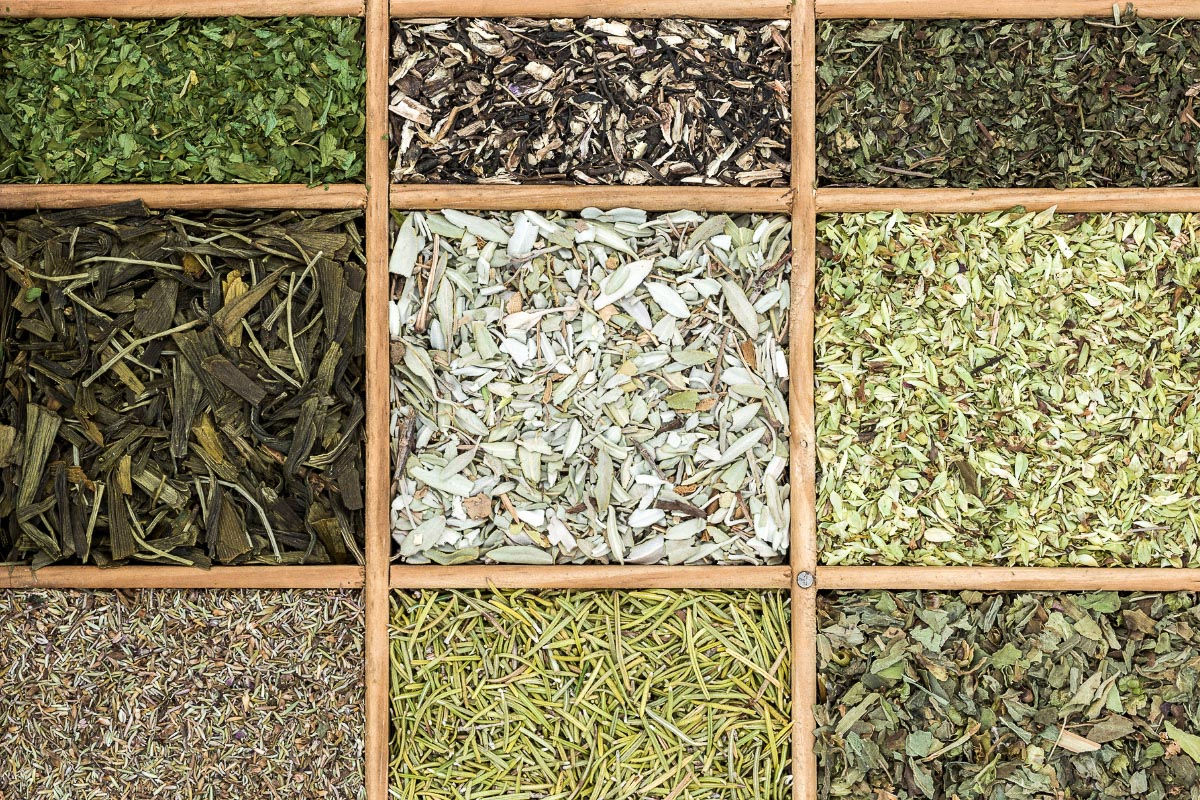
There are many dried herbs that are lab tested, too. Dried herbs are most often used during cooking. When it comes to dried herbs, you do want them to be as fresh as possible. We know that sounds like an oxymoron, but dried herbs that have been in your pantry for 6 months, a year or more, and have been opened, are most likely stale. Their flavor will have greatly diminished.
If you can, buy small amounts so that they stay at their peak, longer. Always store in airtight containers in a cool, dark location. Right above the stove, exposed to light, moisture and heat is the worst place! A cupboard or drawer is perfect.
Please refer to your apps for serving sizes.
In alphabetical order, here are the dried herbs that have been lab tested:
- Bay leaves
- Chives, freeze-dried
- Epazote
- Fenugreek leaves, dried
- Herbs de Provence
- Lemon myrtle, ground
- Oregano, dried, both Mediterranean and Mexican
- Saltbush
Spices
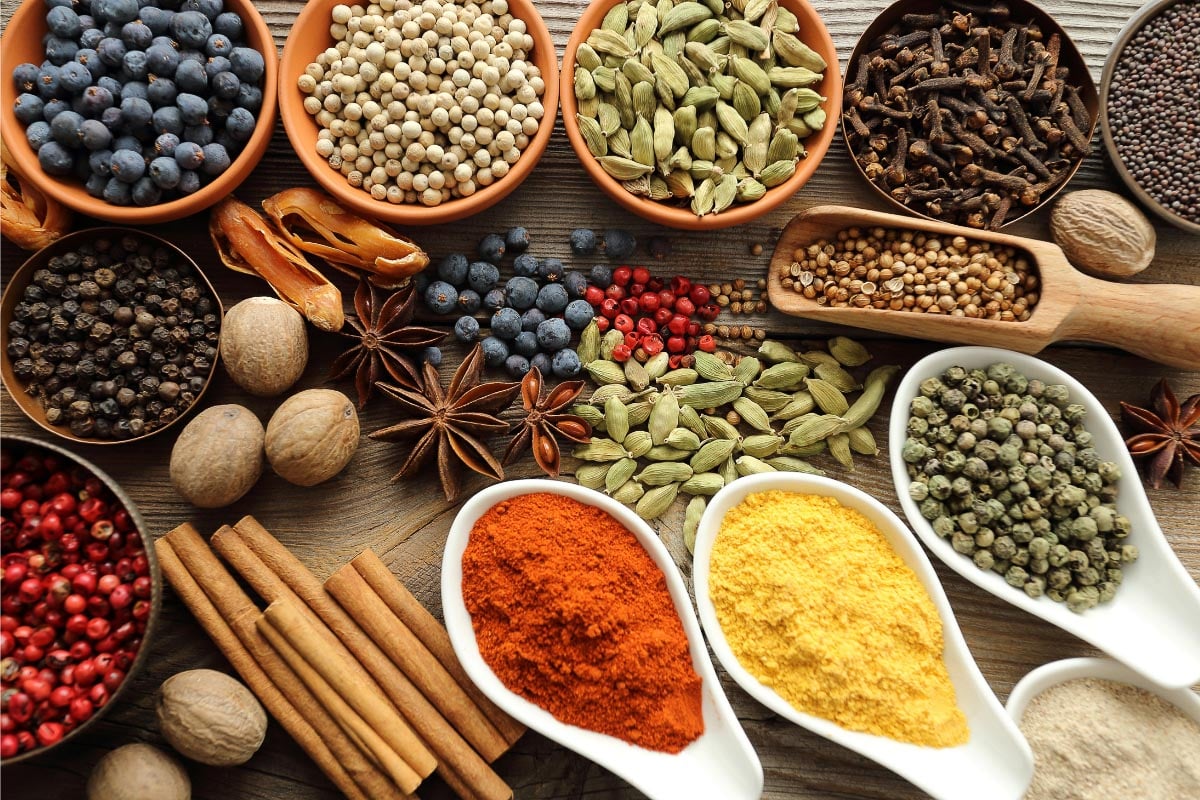
As with herbs, many spices have been lab tested. On the Monash app, look under “Condiments” for spices. On the FODMAP Friendly app, “Herbs & Spices” have their own section.
- Allspice, which you can buy ground or whole
- Cardamom
- Cardamom, black
- Cinnamon, ground and sticks
- Cloves, ground and whole
- Coriander seeds, ground and whole
- Cumin seeds, black
- Cumin, ground
- Curry powder
- Curry powder, meat
- Currywurst powder
- Dill seeds
- Fennel seeds
- Fenugreek seeds, dried
- Five spice
- Garam masala
- Goraka
- Juniper berries, dried
- Mace, ground
- Mustard seeds
- Native pepper (Tasmanian pepperberry)
- Nutmeg, whole or ground
- Paprika, regular and smoked
- Pepper, black
- Saffron
- Sichuan peppercorns (Chinese prickly ash, green)
- Sichuan peppercorns (Chinese prickly ash, red)
- Star anise
- Sumac
- Turmeric
- Wattle seed, ground
What About Herbs & Spices That Have Not Been Lab Tested?
There are some glaring omissions in the Monash and FODMAP Friendly apps. Where is the fresh oregano, for instance? It is a common and popular herb. And then there is parsley. Both apps show curly parsley, so what about flat-leaf parsley?
We do have an answer to both of these questions. We have used fresh oregano and flat-leaf parsley in recipes that we have consulted with Monash upon, and they have approved the usage. What we do not know is specificity of low FODMAP amount.
Then there are lesser known and used herbs such as marjoram or savory, anise hyssop, borage, lovage or sorrel. Less popular for sure, but certainly fantastic flavor boosters.
We suggest looking at any of these as untested items, which we address in our article, What If A Food Hasn’t Been Lab Tested For FODMAPs? We highly recommend reading that article in conjunction with, Ask The Right Question: Is It Low FODMAP Or Can I Tolerate It? These are two different questions, and both are worth delving into.
DIY Herb & Spice Blends
There are pre-made herb and spice blends that certainly make low FODMAP cooking more convenient. Many are even lab tested and certified low FODMAP by Monash University and FODMAP Friendly.
We keep a selection of these in our spice drawer, but we also like being able to DIY. We have several for you, in addition to an article that explains the best way to approach creating your very own blends. It is a great way to control quality, and can be economical.
- How To Make Low FODMAP Seasoning Blends & Spice Mixes
- Low FODMAP Everything Bagel Seasoning
- Low FODMAP Cajun Spice Blend
- Low FODMAP Italian Seasoning
- Low FODMAP Taco Seasoning
- Low FODMAP Ethiopian Berbere Spice
- Low FODMAP Sweet BBQ Dry Rub
- Low FODMAP Smoky BBQ Dry Rub
- Low FODMAP Jamaican Jerk Seasoning
- Low FODMAP Tex Mex Seasoning
- Low FODMAP Moroccan Ras-el-Hanout Spice
- Low FODMAP Mediterranean Za’atar
- Low FODMAP Salt-Free Herb Mix
- Low FODMAP Dry Ranch Seasoning
- Low FODMAP Steak Seasoning
- Low FODMAP Garam Masala
- Low FODMAP Lemon Pepper
- Low FODMAP Cumin Allspice Dry Rub
- Low FODMAP Sweet & Spicy Dry Rub
Condiments & Other Flavor Enhancing Foods
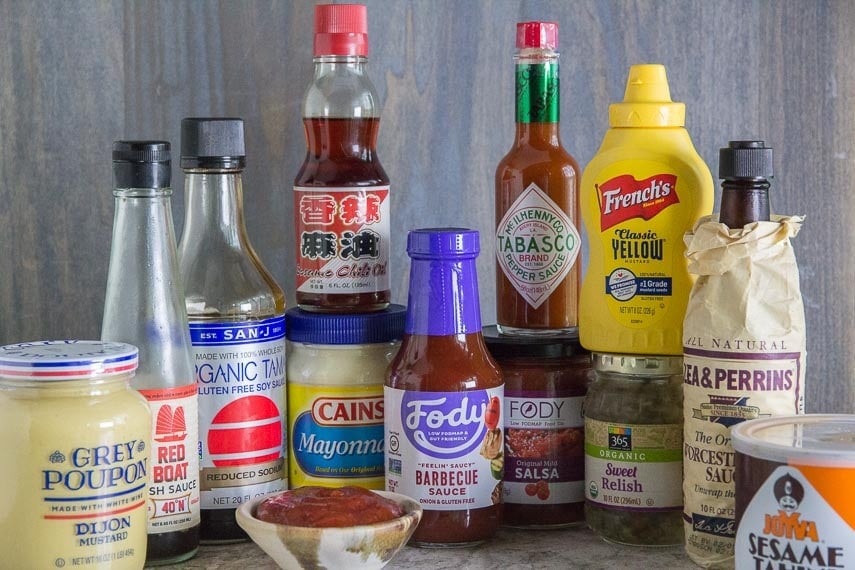
When we think of condiments, mayonnaise, mustard and salsa might come to mind first, but there are so many others, and they can add so much flavor to our low FODMAP cooking.
Condiments & Seasonings Can Contain Garlic and Onion
Worcestershire sauce (garlic and onion), and many ketchup brands (onion and high fructose corn syrup), are two examples of condiments that often contain high FODMAP ingredients. Do not fret! In the amounts lab tested by Monash, these high FODMAP ingredients lab test as low FODMAP. Confused? Check out our article High FODMAP Foods With Low FODMAP Serving Sizes.
To reiterate what we have said before, IBS symptoms are usually triggered by larger amounts of FODMAPs. Small amounts typically to do not trigger symptoms. Individual tolerance will vary, of course. But the place to start your exploration of FODMAP tolerance is with the lab tested published amounts by Monash University and FODMAP Friendly.
By the way, many ingredient lists will say “2% or less” towards the end of the ingredient list. If a high FODMAP food, such as garlic, onion or high fructose corn syrup, is in 2% or less in a food product, the recommended serving size is unlikely to trigger IBS symptoms. Read our article How To Decipher “Natural Flavors” & “Spices” on Food Labels for the Low FODMAP Diet, which explains this in detail.
One note on the ever-popular ketchup: please note in the Monash app that ketchup with or without high fructose corn syrup lab tests as low FODMAP in the exact same serving size! There is no reason to buy “special” ketchup for FODMAP reasons, as the difference in serving sizes is a mere 4 g between “low FODMAP ketchup” and conventional (with or without high fructose corn syrup).
Condiments, Sauces & Miscellaneous
Take a look at all of these easy-to-find, flavor-packed condiments, sauces and miscellaneous ingredients that will add flavor to your low FODMAP cooking. And be sure to read our article, The Ultimate Guide to Low FODMAP Condiments.
A Note On Lack Of Specificity
Please note that when Monash or FODMAP Friendly list something like “hoisin sauce” without any other info, we still do not have all the information that would be most helpful. Most conventional hoisin contains garlic, although some does not.
What kind was lab tested? We do not know. This is where some guessing comes into play. We suggest not to overthink it. If a product you want to try, like hoisin sauce, is lab tested and listed in the apps, try it! Try your favorite brand and see how you digest it. After all, how you react to the food is what is most important anyway.
This is also why it is very helpful to become familiar with lab tested and certified branded products, because then you know exactly what was tested. More on this below in the section titled Certified Brand Products.
Your apps will provide serving sizes.
- Almond butter
- Black bean sauce, with and without garlic
- Black pepper sauce, Asian style
- Capers, in vinegar and salted
- Chimichurri sauce, mild & hot
- Chinese cooking wine (Shaoxing)
- Chutneys of all sorts (please see apps)
- Corn relish
- Fish sauce
- Gherkins in vinegar
- Galangal, fresh
- Ginger, fresh
- Habanero sauce, red and green
- Hoisin sauce
- Honey
- Horseradish
- Ketchup; please note that you can buy conventional ketchup – and that kinds with high fructose corn syrup and without have the exact same low FODMAP serving size
- Ketjap manis; sweet soy sauce
- Mango, pickled, without garlic or onion
- Mayonnaise: regular, low fat and Japanese
- Mint jelly
- Mint sauce, thick and thin
- Mirin
- Miso
- Molasses
- Mustard: unclassified, Dijon, French Dijon, wholegrain, German mild
- Oyster sauce
- Peanut butter
- Pesto
- Pickled vegetable relish
- Quince paste
- Remoulade
- Salsa verde (Mexican)
- Salsa, mild, containing garlic and onion
- Shrimp paste
- Soy sauce
- Sweet and Sour sauce
- Tahini, hulled and unhulled
- Tamari
- Tamarind paste
- Vanilla bean
- Vanilla extract; vanilla essence
- Vegemite
- Verjuice
- Vinegar: apple cider, balsamic, black, malt, red wine, rice wine, white
- Wasabi paste, with sorbitol
- Wasabi powder
- Worcestershire sauce
Dry Seasonings
- Adobo seasoning, salt based (Monash notes that the ones they tested do contain onion, but at the amount suggested – 1 teaspoon (6 g) – the FODMAP levels are low enough to be deemed low FODMAP)
- Amchur (mango powder)
- Asafoetida
- Biscuit spice
- Kakadu plum powder
- Sambar spice blend
Wine & Spirits

We have quite an extensive article on Low FODMAP Cocktails & Mocktails that takes you through the spirit world in detail. Here are some high-level notes. You can cook with wine and liquors!
Here are lab tested low FODMAP amounts of:
- Beer: 12.7 ounces (375 ml); this a little more than the typical bottle or can
- Wine (red, white, sparkling): 5 oz (150 ml)
- Gin, Vodka, Brandy, Tequila, Whiskey: 1 oz (30 ml)
Citrus!
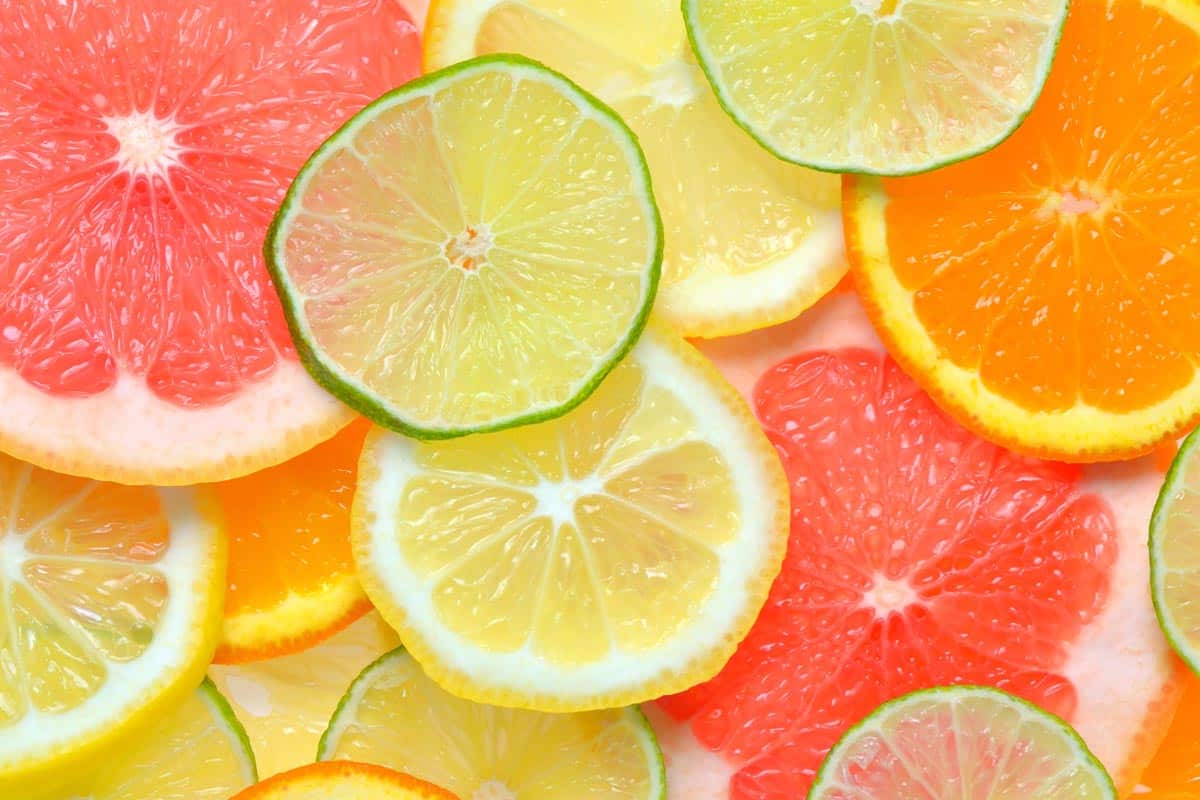
Citrus of all sorts add flavor with juice, pulp and zest (rind).
Lemon, lime, grapefruit and orange juice can add flavor to your low FODMAP cooking. The entries in the Monash and FODMAP Friendly apps – for those items tested by both – are quite different, but they are all reliable and you can use any of the app entries as a starting point.
PS: When it comes to orange juice, it gets complicated. You might want to read this article called Why 100% Orange Juice Is Still Artificial. We warn you that you will never look at commercially prepared orange juice the same way again. Basically, the orange juice that you buy, that is labeled as 100% orange juice, and even “not from concentrate” has gone through a lot of processing. The juice might be over 2 years old, and it might have had oxygen removed from vats and special “flavor packs” added back in (all is explained in the article).
At one point Monash reported navel oranges as containing no FODMAPs. On subsequent lab testing, they did show fructose. FODMAP Friendly lab testing has shown no FODMAPs. Monash had, at one point, also reported that freshly squeeze orange juice contained no FODMAPs. Subsequent entries in their app shows fructose. What is going on?
It means that some navel oranges are FODMAP free; others show FODMAP content. Neither we nor Monash know the FODMAP content of the ones you will be buying. If we have an orange that contains no FODMAPs and we juice it ourselves, the juice would contain no FODMAPs. I think what happened with Monash’s conflicting juice info is that they might not be aware of the information shared in the article linked above and perhaps the “fresh squeezed” OJ they lab tested was not what it seemed. Or, maybe the oranges they used did have fructose content.
Before you yell in frustration and want to throttle me through the computer, know that in this myriad of confusion we actually see freedom. What it means is that it is possible for navel oranges themselves and their juice can be FODMAP free. Why not try small amounts and see how you do with them?
Grapefruit juice has not been lab tested, but grapefruit has been. According to Monash it is low FODMAP in 80 g amounts; FODMAP Friendly reports 150 g, with a maximum of 250 g. We suggest taking a tested amount, juice it, and use the juice,
Lemon and orange zest in particular have been lab tested by Monash and have low FODMAP serving sizes listed in the app. They do list grams – go by those; always go by weights – because their statement of “zest of 1 orange” could be so variable. Lime and grapefruit zest have not been lab tested, but anecdotally we have heard many people digest them quite well. Always eat to your own tolerances.
Stocks & Broths
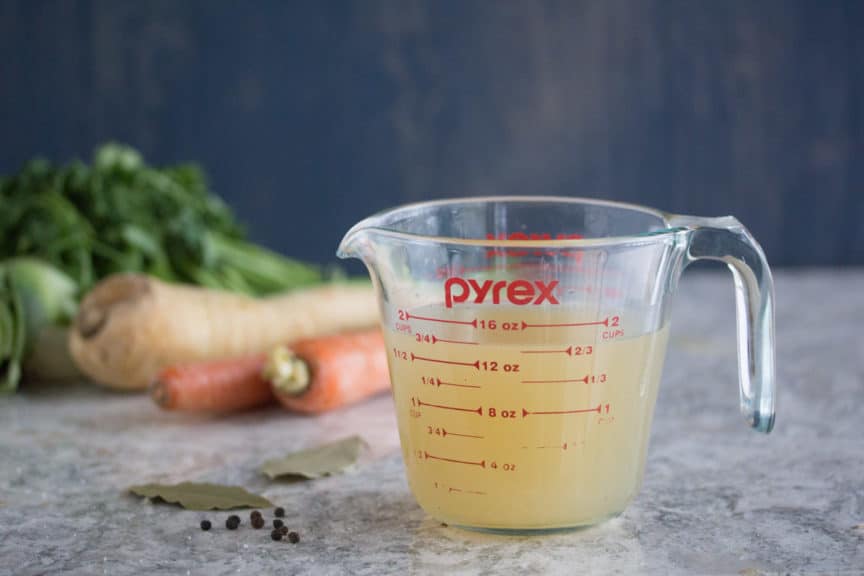
We have recipes for all kinds of homemade low FODMAP stocks & broths: chicken, turkey, beef and vegetable. Dashi, too! And you can find prepared stocks in your local stores and online (our Shopping Lists mention several). You can find cubes, powders, liquids and concentrates.
Here are a few favorite products:
- Gourmend Organic Chicken Bone Broth
- Gourmand Organic Beef Bone Broth
- Fody Vegetable Soup Base
- Rachel Pauls Beef Base Happy Soup
Tomato Products
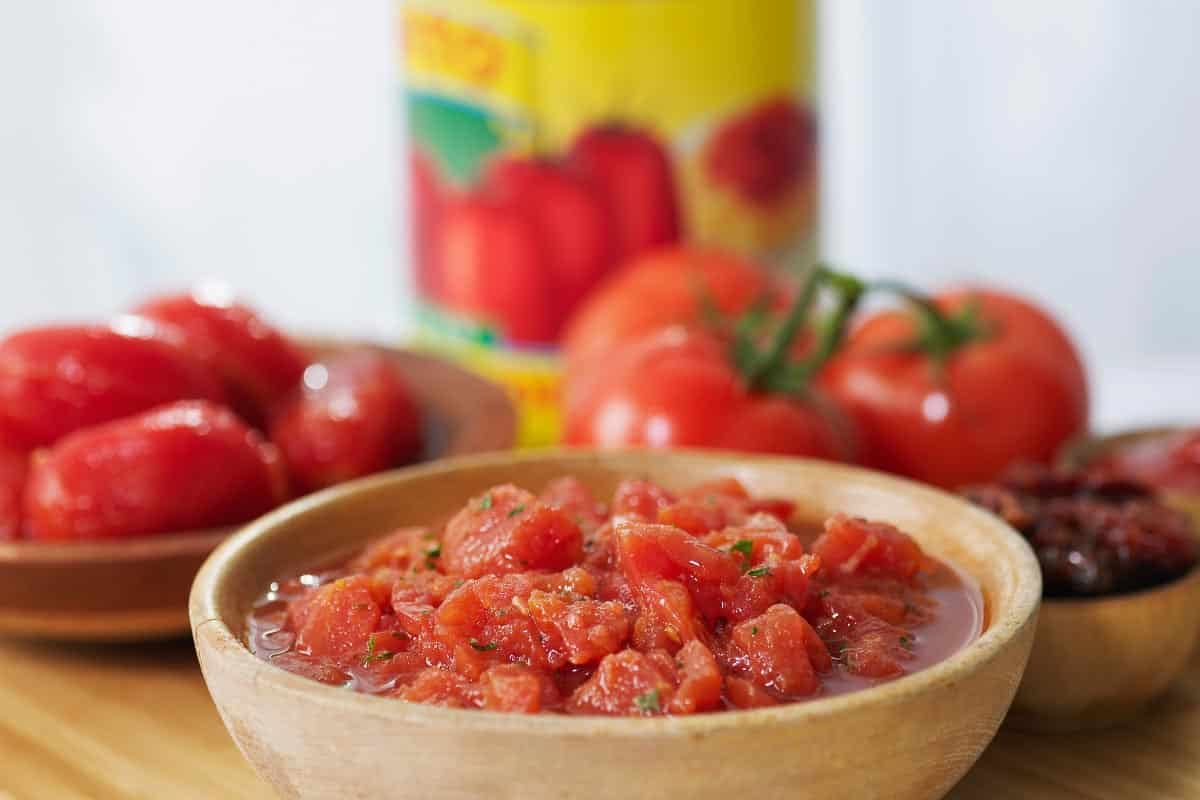
Fresh tomatoes of all kinds have low FODMAP serving sizes, but here we are going to address the types of tomato products that we use in cooking. We have already mentioned tomato -based salsa, but what about tomato paste, passata, tomato sauce, canned whole tomatoes and other processed tomato products?
Instead of listing them all here, please refer to our article, Are Tomatoes & Tomato Products Low FODMAP? The answer is yes, you can use these products, and the article takes you through many kinds, one by one.
Umami
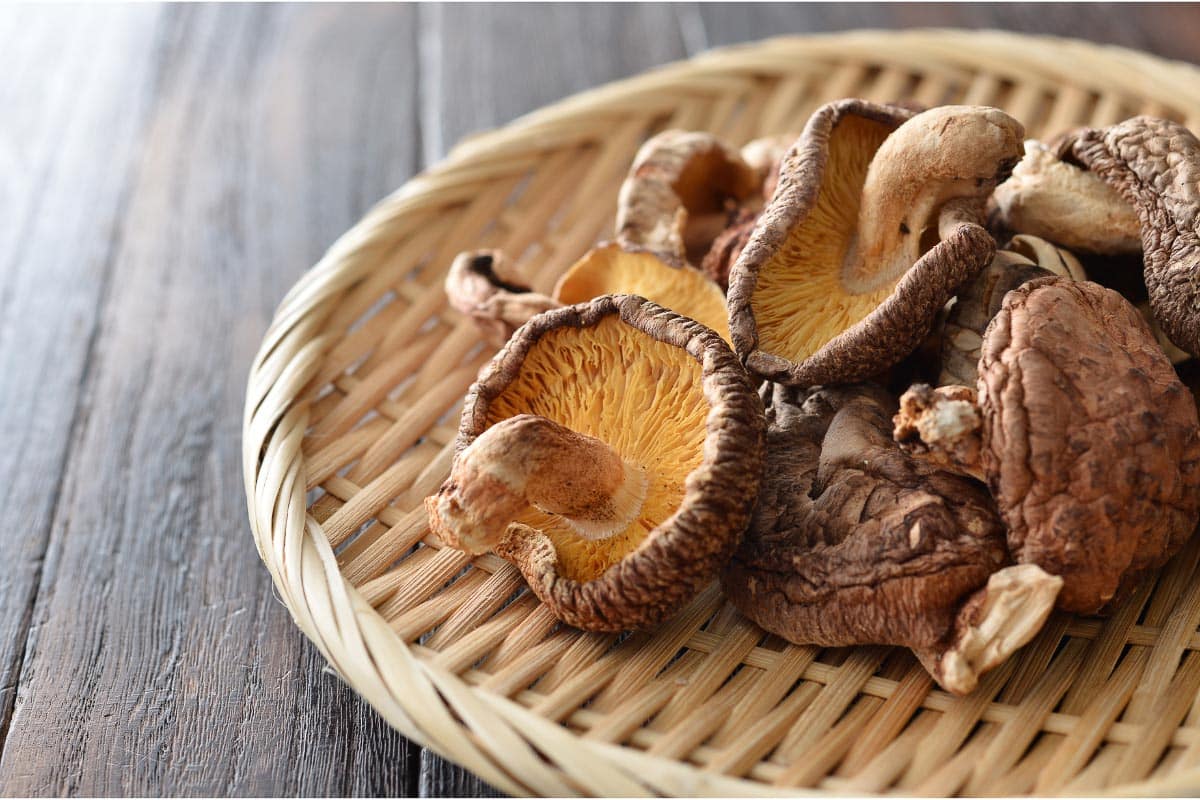
Maybe you have heard the word umami, and are not sure what it is. It is one of the 5 tastes in addition to sweet, salty, sour and bitter. Umami is defined in Japanese as “pleasant savory taste” or “deliciousness”, and sometimes described as a “meaty taste”. It is experienced as a delectable quality to food, providing a deeply flavorful experience. You can read more in our article, Umami & FODMAPs. If you want to add flavor to your low FODMAP cooking, understanding umami is a great start!

Foods high in umami add flavor. Here is a list to consider, all of which have low FODMAP serving sizes:
- Dried shiitake mushrooms
- Miso
- Soy sauce and tamari
- Worcestershire sauce
- Tomato paste and dried tomatoes
- Parmesan cheese and aged cheeses
- Blue cheese
- Anchovies
- Fish sauce
- Oyster sauce
- Seaweed, such as kombu
- Kimchi
- Vegemite and Marmite
- Nutritional yeast
Certified Brand Products
If you look on your Monash University and FODMAP Friendly apps you will see separate sections devoted to brand named items. On the Monash app, the section is simply called “Certified”; on the FODMAP Friendly app it is called “Certified Products”. These are the two entities that are lab testing and certifying products as low FODMAP.
We also have an article for you called, How To Read A Low FODMAP Certified Product Label. Please do read it for a deep-dive into the world of low FODMAP certified products.
When a product has been certified, they will sport one of these icons. When you see these icons on a food product, you are assured that the product is low FODMAP in the serving size suggested. Even if the food contains garlic, dates, honey or other high FODMAP ingredients, it has been proven to be low FODMAP in that serving size in lab tests.
Trust the certification icons, as seen below.
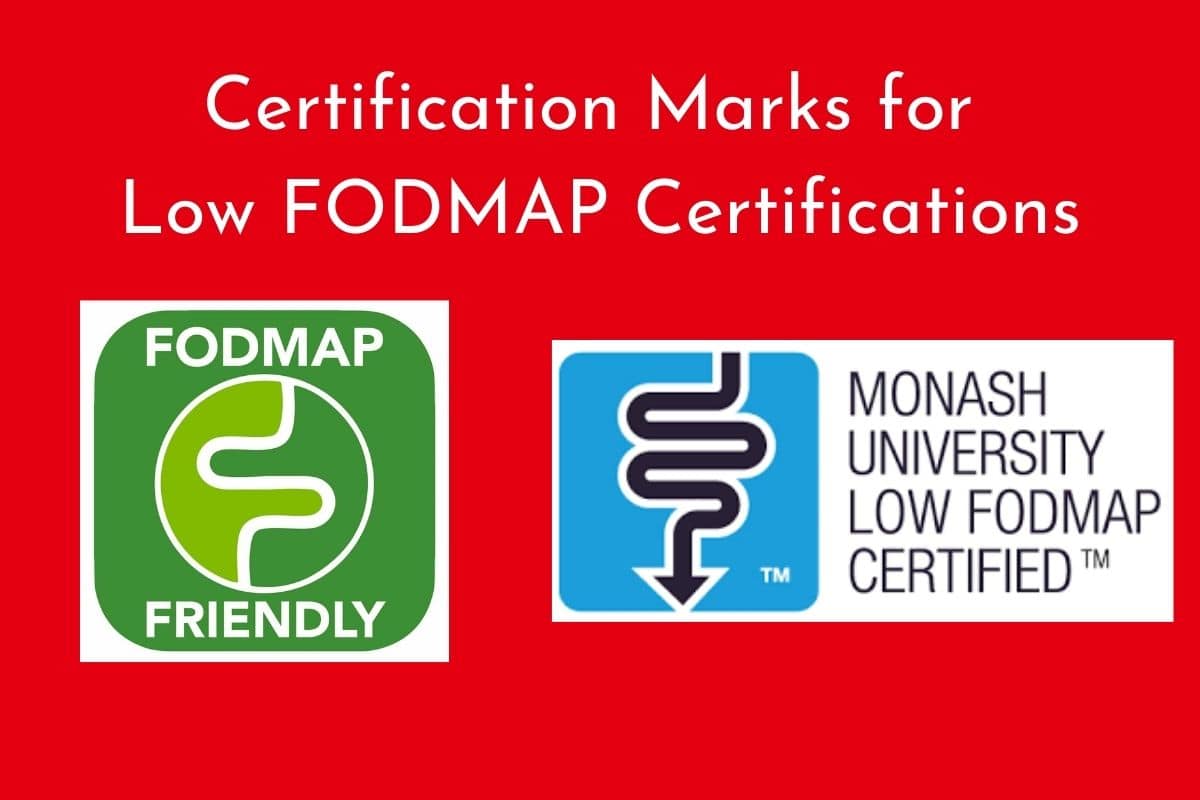
Here is just a sampling of certified low FODMAP products:
- FODY: everything from salsas to Enchilada Sauce, Korean BBQ Sauce, Taco Sauce, Salsa, Marinara, Garlic-Infused Olive Oil and more.
- Gourmend: Garlic Chive Powder; Green Onion Powder, Garlic Scape Powder, Organic Chicken Bone Broth, Beef Bone Broth and others.
- FreeFod: Low FODMAP Garlic and Onion Replacers, which are powders, salt-free, that can be used similarly to conventional garlic and onion powders
- BelliWelli: snack bars with many flavors, such as Chocolate Chip, Cinnamon Swirl, Birthday Cake, Fudge Brownie, Lemon White Chocolate and more.
- Smoke n Sanity: If you are looking for herb and spice blends, this company has many. Some favorites: Triple S All Purpose, Cajun Creole, Garlic Parmesan, Sweet Maple Dust, Essence of Garlic Salt, Essence of Onion Salt, and many other items.
- Kfibre products
- Regular Girl
- Colavita Roasted Garlic Extra Virgin Olive Oil
- HUM Core Strength Vanilla Protein Powder
- Massel Stock Cubes: Beef, Chicken, Vegetable (they have liquid stocks, too!)
- Frusano: dozens of low FODMAP products that are also fructose-free.
- Schar: This company has all kinds of bread low FODMAP products from pizza shells to sandwich bread, rolls, even ladyfingers, and more.
Extrapolations
Extrapolations in the FODMAP world can often lead us astray. Just look at how green and red cabbage do not even contain the same FODMAPs, or how ripe bananas are higher FODMAP than unripe, but the opposite is true for guava. Or that some sprouted items are lower FODMAP, while others are higher. See what we mean?
But in the world of herbs, spices and condiments – our major flavor enhancers – in practice, we and our dietitians see how extrapolations can work. This is mostly due to the fact that they are ingested in such small amounts. You might want to use 1 teaspoon of a dried herb that is not listed in any of the apps, but the dish is going to serve 6 anyway, which means the amount you will eat will be quite small and unlikely to trigger IBS symptoms.
As always tread cautiously when making extrapolations, but when it comes to seasonings it might be worth a shot.
The Takeaway

The low FODMAP diet can be flavor-packed and satisfying, even during the most restrictive Elimination Phase. Garlic and onions contain high FODMAP fructans, which are key flavors for many types of cooking. Many people think, mistakenly, that there is no way to have garlic and onion flavor in their low FODMAP cooking, but nothing could be further than the truth. This article describes many, but please do familiarize yourself with our article, Low FODMAP Garlic & Onion Substitutes.
When it comes to herbs and spices, there are many low FODMAP options, for both fresh and dried. Your Monash University and FODMAP Friendly apps give you details.

Condiments – from salsa, ketchup and mustard, to umami-packed miso and soy sauce – can be used in your low FODMAP cooking. Due to the fact that they are used in very small amounts per serving, even products that contain onion and/or garlic, such as Worcestershire Sauce, are low FODMAP.
We know you can have flavorful low FODMAP food, and we are here to help you thrive – deliciously – on the low FODMAP diet.

